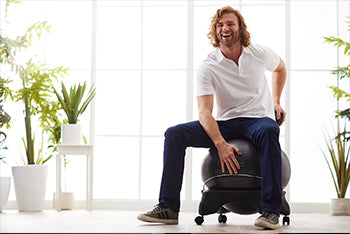Calm in the Chaos
Manhattan in March is cold in an inescapable kind of way. A sunny forecast doesn’t mean much when every square inch of city is in the shadow of one building or another. And the wind weaves between skyscrapers and through your clothes, digging down the back of your neck and up under your shirt like it’s trying to warm its hands on your stomach. It blows fast and frigid off the river, behind the buses, and whips through subway platforms every time a train passes. The cold imparts a sense of urgency in people. They walk faster, jog up the stairs, run to waiting taxis. Between the occasional sheet of newsprint fluttering down the street and the sustained pace of the city itself, Manhattan can be a frenetic place.“For me, Manhattan is the best place in the world to meditate,” says Chodo, his eyes twinkling. He smiles as a car horn blares on the street outside, interrupting him. “I love the sound of the city, I love the cacophony, the sights, the smells, the constant affront to the senses.” There’s certainly no shortage of cacophony here. Like the wind, the city itself is in constant motion. Every corner is packed with pedestrians waiting for the light to turn, every street a surging line of cars, every building a tower of lights and glass and flickering billboards.

Chodo Campbell, along with his partner Koshin Paley Ellison, founded the New York Zen Center for Contemplative Care (NYZCCC) in 2006. It’s a comfortable space in a nondescript building in Chelsea, full of quietly creaky wood floors, candles, incense, and rows of black meditation cushions. There’s a small kitchen and a library behind the front desk, and a framed photo of Koshin and Chodo’s cat on a dresser. The studio sits four floors above Manhattan’s busy 23rd Street, a fact that has caused us no small hassle when trying to interview him. We’re constantly interrupted by horns, sirens, garbage trucks, and everything else that comes with life in the heart of the biggest city in the country. But Koshin and Chodo couldn’t be happier.“From 2600 years ago to now, people have been struggling with realizing we are in this together,” explains Koshin. “Here in modern life, in the heart of NYC, we have very similar concerns. We keep separating ourselves, we get preoccupied, we get distracted, but the opportunity is always the same—that we can be present in this moment.”Koshin was seven years old when he saw a photo of a monk in one of his grandfather’s National Geographic magazines. “He was on a busy street—everything was blurred around him, and he was completely still,” recalls Koshin in almost reverent tones. “All these people rushing, rushing, rushing, and he was completely still.” He told his mother that he wanted to become a Zen Buddhist monk, and has dedicated himself to that practice ever since.

Chodo’s introduction to meditation came from a darker place. “I was an addict for many many years,” he tells us, “but my mind was always in constant…motion. I needed to escape or anesthetize, and I used various substances and alcohol to do just that. When I met my first Buddhist teacher, she thought that meditation would be a good thing for me because I was kind of crazy.” He pauses, winking. “I’m still kinda crazy.”This idea of meditation as solace, as an island of tranquility in the hustle and bustle of the big city, is what makes New York so appealing to Koshin and Chodo. They reject the idea of themselves as teachers or masters, preferring “Zen practitioners” instead. “I’m not this guru; I’m not this wise, wise, learned scholar,” says Chodo, while Koshin sits next to him, almost giggling at the idea. “I’m just this guy that stumbled into meditation many years ago.” These two aren’t supernatural; they have problems and worries and demons like the rest of us.
“It’s kind of like a mirror of my mind,” says Chodo when asked why the city appeals to him so much. “I don’t have this quiet mind, so I have this constant reminder being in New York City that I’m alive.” For Koshin and Chodo, finding calm in the chaos of Manhattan is almost more rewarding because it’s more challenging. Sitting in silence and clearing the mind comes more naturally in the countryside, with only the wind to interrupt. But in the city, it’s a different story. “When things are not going in the way that we would call ideal…silent, smooth…it’s not always like that,” Chodo says. “But can I be present? And can I be accepting of every moment as it is? And if we can do that in Manhattan, we can do it pretty much anywhere.”
Leave a comment
Comments will be approved before showing up.
Also in Blog

Body Peace & Personal Empowerment

Yoga for Swimmers: Poses for Strength and Mobility







